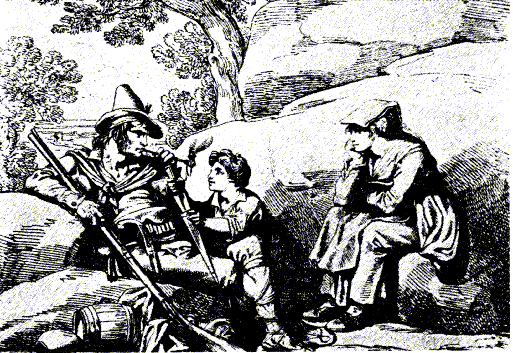Prius tertium is the original name of the village, and it means first out of three, probably referring to the fact that it was the first of three castles built in the valley of Amaseno. Records of its history are scarce but the first reference to its existence dates back to the period when the army of Pope Honorius II (1060 - 1130), in dispute with the local Barons, marched on the village and burned the castle in 1125. If there was a castle at that stage, the village must be over a thousand years old. The structure of the village is typically medieval. The houses would normally have a large lower ground floor for the canteen, a ground floor for the animals, living room and kitchen on the first floor and grains at the top. Most of the houses still have wells, used for the distribution of rainwater to the inhabitants. The village is situated at 500meters height and surrounded by hills that reach 850meters.
| Chronology
of known facts |
|
1125 |
Prius Tertium is occupied and burnt by Honorius II |
1224 |
Pisterzo is mentioned in the testament of Giovanni dei Conti from Ceccano |
1377 |
Pisterzo is half recognised by Pope Gregory XI as a feud belonging to Nofrio of the Counts of Ceccano |
1390 |
The feud is reunited under the rule of Cecco of Ceccano and recognised by Bonifazio IX |
1425 |
The feud becomes property of the Conti's family and recognised as such by Pope Martino V |
1534 |
Girolamo Conti sells three quarters of the village to the Chigi family of Siena |
1544 |
The Chigi family sells the feud to Luca Massimo |
1761 |
Camillo and Francesco Massimo are authorised by Pope Clemente XIII to sell the feud to the Marquis Angelo Gabrielli |
1762 |
Clement XIII turns Pisterzo from feud to principato |
Other testimonies of the history of the village are found in 'Lazio violento' (Violent Lazio), a book written by Colagiovanni on the violent episodes in the region of Lazio. Between 1799 and 1825 the book records 16 violent deaths in Pisterzo, linked to the passage of the French and Polish armies in the region, which turned many refusniks to hide in the mountains and live of brigantaggio.
The village passed from hand to hand, being on the border between the Vatican state and the Empire of Naples it was an area often used by outlaws escaping persecution. The best known brigante in the area was Gasbarrone, protagonist of numerous legends of violence, honour, blasphemy and criminality.
From the beginning of the 1900 through the century there has been a constant flow of emigration from Pisterzo to Toronto, Canada. People went there and worked on railroads and construction sites to send dollars back to their families, which allowed them to buy land on the mountain to grow olive trees and figs. Some stayed in Toronto, many went back to Pisterzo in the 1970's. At the moment much of the male population also speaks english, or a mixture of english and Pisterzo dialect, whilst some english words have merged with the local vocabulary (backetta, jobba, etc.).
Oral History
Not much is known of the history of Pisterzo, especially of the role of its inhabitants in the Second world war, the difficulties in times of scarcity and the role of women in the village at the highest points of male emigration. Tales of survival and resistance are still vivid in the memory of Pisterzani, always ready to tell and recount a past in danger of being erased.
We would like to hear more of these stories and record them for ourselves and others to know.

The state in Pisterzo
Pisterzo is one of only four cases in Italy of comune appodiato, or frazione. This means that it does not have its own council, but elects a very small number of representatives who participate to the council meetings of the closest comune: